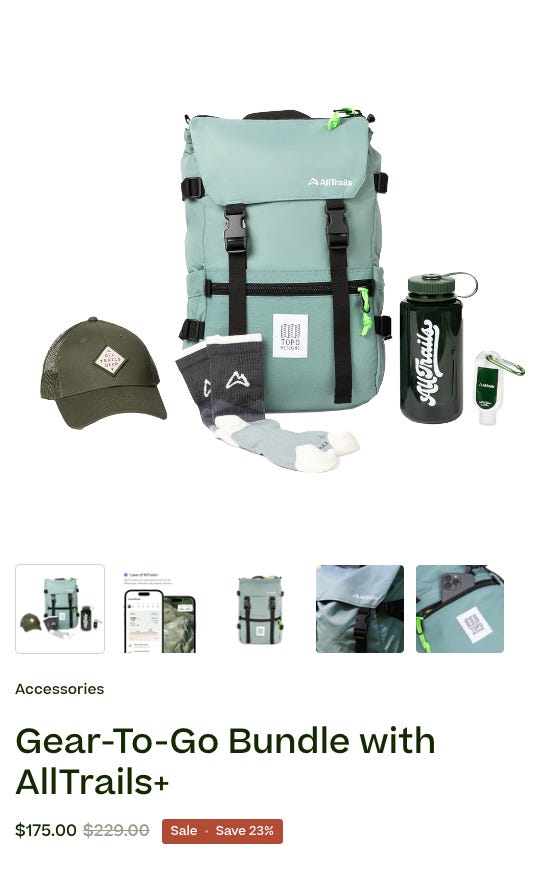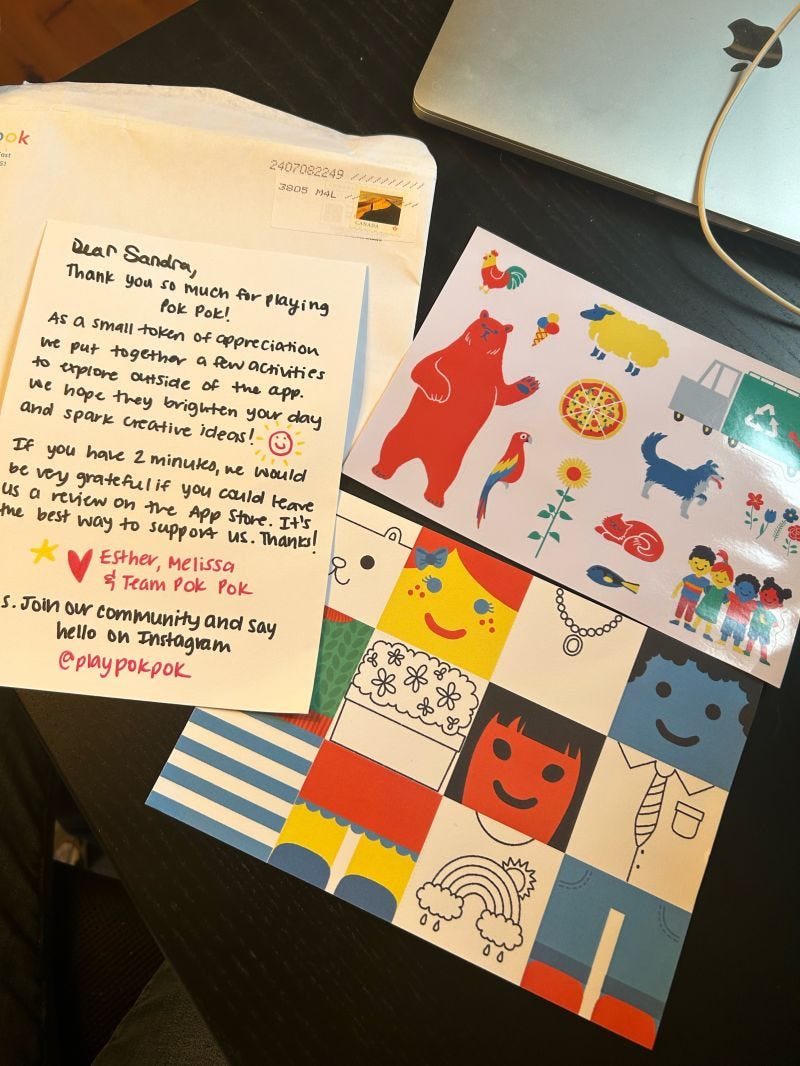Physical Products
Put something into the real world
Hey there, it’s Jacob at Retention.Blog 👋
I got tired of reading high-level strategy articles, so I started writing actionable advice I would want to read.
Every week I share practical learnings you can apply to your business.
Can you expand outside of the digital world?
The beauty of software is you have low fixed costs.
You can start a new business sitting in your underwear on your couch.
In the old days of software, you at least had to print CDs and create packaging so someone could buy it in a store.
Now you can build and distribute something without ever touching anything besides your keyboard and mouse.
This is part of the beauty of mobile apps and the distribution ecosystem Apple created.
But we do live in the physical world.
We have houses and beds and furniture and books and other things we touch besides our phones and TVs (some of us more than others…)
Could your app create more value, retain better, or monetize better by offering physical goods to buy?
The question isn’t whether you could make more money by selling physical goods.
The question is whether you have the resources (people, time, money) to support this product line expansion without distracting from the core of your business.
There is an opportunity cost to everything
Can you grow new revenue faster by doing something new versus putting that same level of effort into what you’re already doing and just do it better?
I can’t answer that question for you, but I can show you what some other mobile apps are doing. And then you can figure out if it makes sense for you.
Expansion revenue and upselling have been staples of business pretty much forever.
E-commerce brands know that the goal isn’t to sell you one t-shirt, it’s to get you in the door because you like that t-shirt and then you end up buying 3 other shirts. And a month later some pants, and then 3 months later some sunglasses.
Subscription businesses have a built-in benefit of auto-renewing subscriptions and semi-predictable revenue.
If you have thousands to millions of users, do you think some percentage of them are open to buying something else from you besides an app subscription?
Very possible if you’ve built a good product people like.
Headway thinks yes.
They have just started promoting a journal to sell to their audience.
I’m sure they spent meaningful time producing this journal to make it of quality, but there are so many other products like this out there, that they could have easily licensed something without putting in much work themselves.
They certainly aren’t fulfilling orders themselves, and to be fair, no one really does that anymore.
Headway appears to be working with a company called Goodly:
Let’s think about the math.
Headway has a default price of $89.99.
Let’s say 5% of those users become paying users, that works out to ARPU of $4.50.
What if just 1% of those new users go on to buy the journal?
That would take your ARPU to $5, an 11% increase (if we ignore the cost of goods). At Headway’s scale, that could be a few million dollars and might very well be worth it.
Who else sells physical goods?
AllTrails has slowly built out a pretty big shop.
And they don’t rest on their laurels. They consistently launch new products and collabs:
I’ve received about 20 emails so far this year from their “Gear Shop”
AllTrails has a huge “free” acquisition channel from their SEO.
This means if they can stand up a new revenue source to better monetize this traffic and better monetize their free users, it can be huge.
And to be fair, most sales are probably driven via email to existing users (free or paid). Not many people are going to search for a trail and then discover their shop before using the app.
For a product with millions and millions of free users like AllTrails, this can be very impactful.
Especially when you’re selling $200 gear bundles.
I know a lot of you are thinking, “But I don’t have millions of users!”
What am I supposed to do with all of this?
There are other ways you can use physical goods. Maybe you don’t sell them, maybe you give them away?
Giving something to people for free can be a reminder of your app. And you’ll likely boost retention and renewals.
Which can then pay for the cost of that item.
“I’m not sure I get it, Jacob. Can you give me an example?”
You bet!
The kids learning app PokPok sent parents a nice note and sticks and games for their child.
If your child puts stickers all over your house from an app, do you think you’re going to forget about it? Of course not. And maybe more importantly, your child probably won’t either.
Another kids learning app, Smart Tales, offers free printable worksheets that parents can print out.
This is a great physical item to bring the product into the home in the real world. And gives more value to the parents from the product.
Value is the key.
How can you provide more value for users of your app?
Do you know of any other apps wading into the waters of physical goods? Let me know!
📣 Want to help support and spread the word?
Go to my LinkedIn here and like, comment, or share my post.
OR
Share this newsletter by clicking here.















